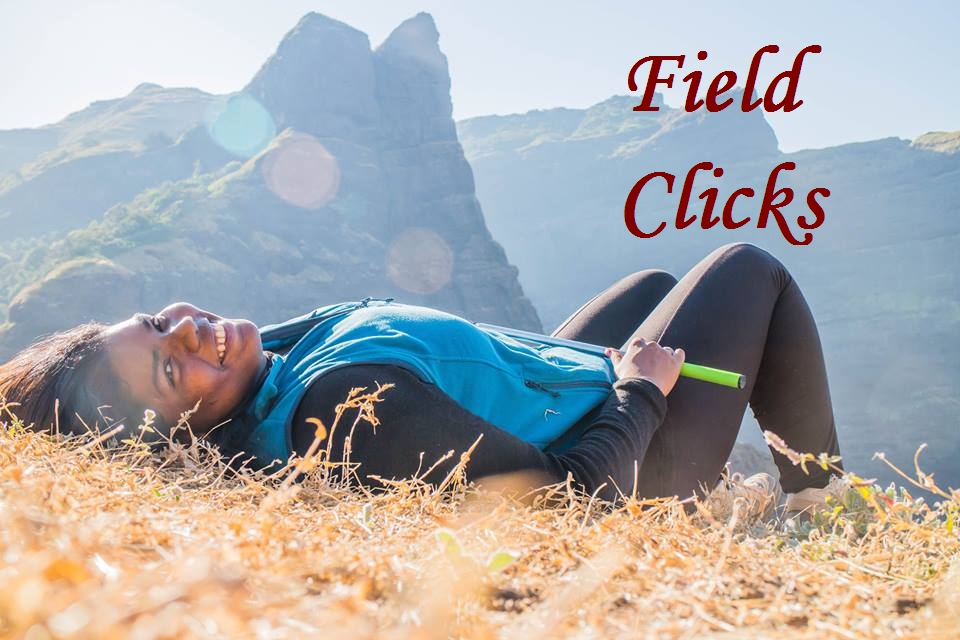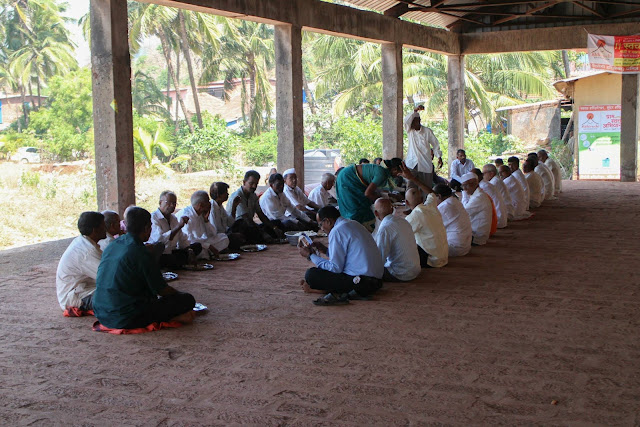Velas, is a small village , in the Ratnagiri District of Maharashtra, on India's Western Coast. The reason it is famous is because Olive Ridley Turtles come to this beach to lay eggs, and a new generation of Olive Ridley turtles, makes its way into the ocean every year.
For many years, these eggs were subject to being eaten by predators , including the two legged ones. Then some folks called Sahyadri Nisarga Mitra(SNM) decided to take this up as a project, and worked towards sensitizing the local population and educate them about saving these turtles .
The Kasav Mitra Mandal(KMM) and the SNM , every year, organize a Turtle Festival in Velas during February and March. The turtle eggs are protected and the area cordoned off . The village mobilizes for hosting world tourists . Homestays offering local food and simple facilities are registered with the organizers . Velas Village is a clean village with warm people who welcome you into their home and lives when you visit during the Velas Turtle Festival , and their food is excellent and stay very comfortable. There are strict environmental rules that are followed, regarding trash etc, and keeping in mind the sensibilities of the villagers. Chaotic rushing towards the turtles, and invasive photography is not allowed.
I went there in March 2015. After an overnight road trip from Mumbai, our group reached Velas early at dawn. Enjoyed delicious simple home food . There are fixed 1 hour slots, planned by years of observation, when the turtle hatching is checked. An hour early morning, and then an hour around 5.30 pm. The hatched turtles then slowly make their way into the ocean, watched by silently applauding folks, behind a rope , clicking away. You may not always see a hatching, but we were lucky.
We also visited the Bankot Fort nearby and Harihareshwar , a temple town on the beach, on our way back.

The clean Velas beach,as yet untouched by commerce, which has spoilt all beaches in Mumbai.
The team leader briefing our group .
The turtle eggs are protected by cane baskets kept inverted around them, and are checked twice a day for a hatching. There is a special protected enclosure where these are kept, and only authorized folks are allowed inside. Lots of discipline in handling such a festival, and the villagers are to be applauded.
Notice all the avid photographers and visitor tourists behind the rope boundary. Rules are strictly enforced. The baby Olive Ridley turtles must have a clear unhindered path to the ocean.
And the journey into this world, begins for some. All by themselves, right from birth.
And one more step to freedom......
The slow journey continues, a short breather, and the paparazzi click. As James Bryant Conant said "Behold the turtle.
He makes progress only when he sticks his neck out...."
He makes progress only when he sticks his neck out...."
The Velas Sea , welcoming the turtles.
Sands of Velas
A beautiful sunrise in Velas heralding some hatchings.

A typical Velas home, with a huge forested backyard, and buffaloes .

And, yes , someone is curious about the camera...

A short walk to the beach at Velas

A typical house in the heart of Velas... an early morning scene

This is the type of vegetation that lines the shore at Velas..
Sunset at Velas
Normal beach activity at Velas
The beautiful blue sea at Velas
Unspoilt by greedy commercial ventures by humans, the coastline has heavy forestation at Velas. The trip to the beach, involves a ten minute walk through some undulating greenery and shrubs, native to the land.
Me, posing, in a typical backyard of a Velas home. Coconut and Supari(Betel nut) trees are the norm. Notice the well .
We visited Bankot Fort near Velas the next morning. A square shaped fort, and the place where the first British residency in Kokan was established, it is famous for the usage of a special type of native porous purple stone called Jambhya stone. Surrounded by a now dry moat, with the usual fortifications , there is a Maruti temple at the centre of the Fort.
A view of the Bankot Bay, from the Fort.
Typical vegetation at he Bankot Fort in March
Bankot Bay, "framed" from the Fort

Another view of the shores (Bankot side) of the Savitri River Creek,
We waded through these floating in the water, en route to the Harihareshwar temple.
Bael fruit tree in the temple courtyard
In praise of the Lord ; offerings to the deity at Harihareshwar
Reaching Harihareshwar, a temple town favourited by the Peshwa Rulers. The authorities have provided outdoor vantage points for tourists. Some of our group can be seen on this part which is attached to the actual temple. .
A different silhouette view of the same set up. Harihareshwar beach in the background, where one must be careful about venturing into the sea.
The sea at Harihareshwar and the promenade. We had a local lunch at Harihareshwar before leaving for Mumbai.
Very often, devotees ask for something when they worship, and thanksgiving meals are promised in the name of the deity. This is possibly one such thanksgiving meal being conducted by a family, with the family head and his wife, serving the group at a sit down lunch.
The rocky beach at Harihareshwar and the environs of the ancient temple with a Nandi in stone out on the courtyard. Notice the typical red "chira" stone of Kokan.
Another view of the sea at full tide at Harihareshwar beach.
The omnipresent coconut seller, and the now mandatory notices by the government, exhorting folks not to throw trash around indiscriminately.


























































